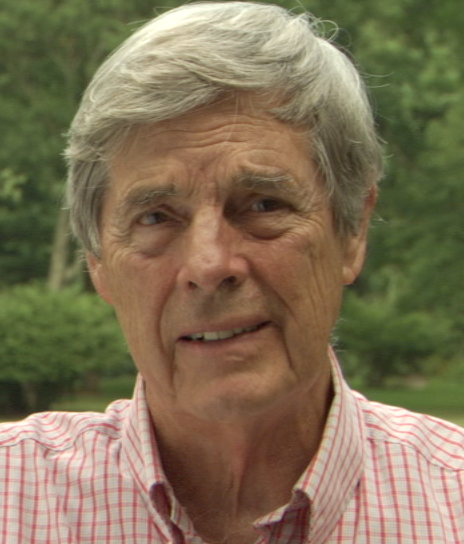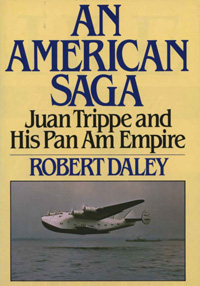An Author's Experience
by Bob Daley
Bob Daley, noted author & journalist, wrote the definitive history of Pan Am: An American Saga (Random House, 1980), plus twenty-seven other works of fiction & non-fiction, six of which have been made into motion pictures.
"I had a phone call from John Leslie. This was some years ago. Someone had given him my name. He said he was in charge of the Pan Am history project. Would I be interested in writing a history of Pan Am?
I met him in his office in the then Pan Am building. He was very cordial. Finally I asked him: "What kind of book are you looking for? His answer surprised me. "I'll tell you one thing it's not going to be," he said with some asperity, "it's not going to be a biography of Juan Trippe."
I thought: there's something here under the surface. I don't know what, but something.
I was not an aviation writer. Nor had I ever done a book like this before, but the idea appealed to me. A fascinating story that seemed certain to be a best seller. The chance to get close to Trippe. Like any career journalist I had been thrown up against a variety of famous people in many walks of life, everyone from Mohammad Ali to Bobby Kennedy to Paul Newman. But never a tycoon like Trippe. Also, Pan Am and various of its station chiefs had been part of my life during all those years in Europe for the New York Times. In London my wife, children and I had even been invited to stay in the Pan Am apartment.
I learned that I would have to pay a hefty percentage of my royalties to the Pan Am Foundation, which I took to be another name for Juan Trippe, for the privilege of talking to him.
I went to Random House and asked for and was accorded a contract paying me an advance against royalties of $120,000. I reserved to myself absolute editorial control. No one, when the book was finished, would be able to change a word. And I started.
I had about 50 interviews with Trippe, who was not forthcoming. He turned out to be the most close-mouthed subject I have ever interviewed, still protecting secrets that were no longer secret. I learned that one of his early nicknames was Mummy, and soon understood why. And when An American Saga was finished and in the hands of the publisher, he tried to block publication. I came to dislike him intensely.
 All along I brooded about him. Obviously he was one of the most important Americans of his own time or any time, a giant among men. What was Trippe's success based on? I concluded that it was based on gambling, that he was a gambler on a colossal scale, and that every single one of his gambles paid off. In 1935 he planned the crossing of the Pacific, sending men and ships to Wake Island without knowing whether flying boats could even find the place, much less land there. And if they couldn't, there went the whole plan. He once spent millions of dollars for powerful new jet engines for which he had no planes. The idea was to force Boeing to build him the plane to go with them, the plane he wanted but Boeing didn’t. With so many engines on hand he couldn’t back down, so Boeing would have to. And they did. And what about buying those first jets before most of the world’s airports could even land them. There were many such gambles, all successful.
All along I brooded about him. Obviously he was one of the most important Americans of his own time or any time, a giant among men. What was Trippe's success based on? I concluded that it was based on gambling, that he was a gambler on a colossal scale, and that every single one of his gambles paid off. In 1935 he planned the crossing of the Pacific, sending men and ships to Wake Island without knowing whether flying boats could even find the place, much less land there. And if they couldn't, there went the whole plan. He once spent millions of dollars for powerful new jet engines for which he had no planes. The idea was to force Boeing to build him the plane to go with them, the plane he wanted but Boeing didn’t. With so many engines on hand he couldn’t back down, so Boeing would have to. And they did. And what about buying those first jets before most of the world’s airports could even land them. There were many such gambles, all successful.
The rest of the Pan Am story was as exciting as I had hoped. I spent time with many employees past and present, all of whom talked as freely as any writer could wish, and often the details they provided were stunning and these stories and anecdotes are in the book. Those who spoke of Trippe spoke without warmth. It seemed clear that certain of them disliked him, but not one ever spoke disparagingly about him. I once said to John Leslie: "Why was it that not one of you ever stood up to him?"
To which Leslie replied: "But he was right all the time."



